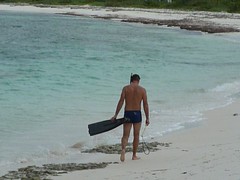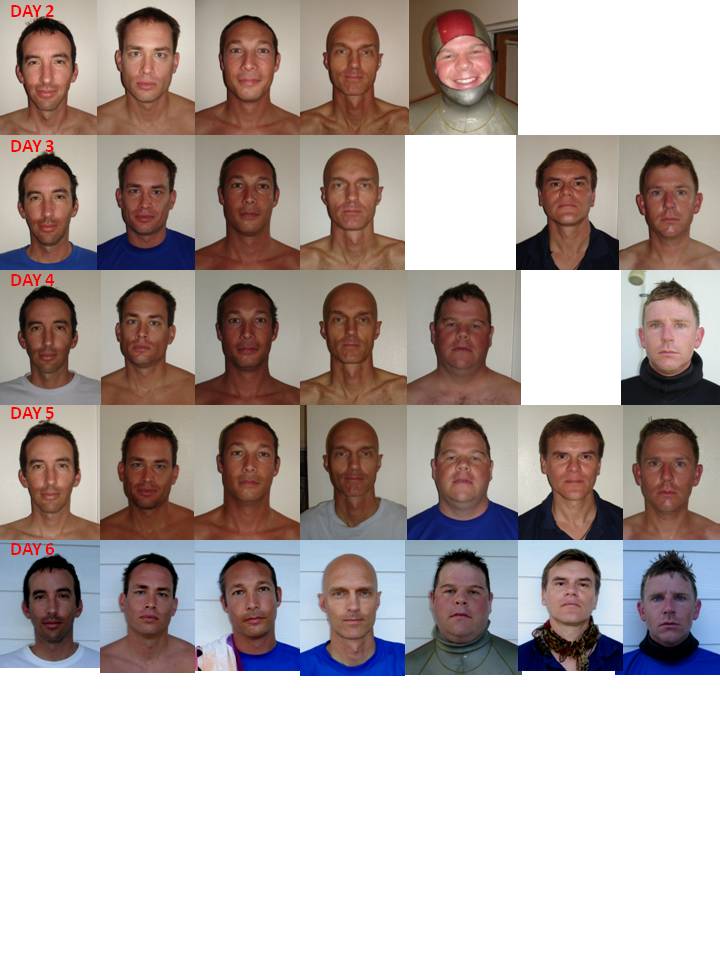William Winram and Herbert Nitsch were nice enough to lend us their spear fishing gear, so we could go out and have some fun. We have now gone spear fishing twice so far and both trips have brought home dinner.
Yesterday we went out spear fishing after saftying the women’s constant weight competition. We were joined by the German freediver Heidi and her husband Mark. We started out from the beach, which is across the street from our house, and swam out to find something to catch.


We hadn’t been swimming for to long before spotting the eagle ray shown in the video below.
[youtube=http://www.youtube.com/watch?v=A0vwjKkbzeo]
After about 45 minutes I saw Martin go down and shot his spear into a small hole in the coral. When I dove down I could see the antennas from the large lobster he just shot. I went into our floating bucket to get the glow we brought so I could help him with the spiny catch. When he pulled out the spear and lined up for my camera, the lobster twisted so much that the spear tip twisted off. Martin let go of the lobster and went down for the spear tip, because we borrowed this gear and didn’t want to loose it. You can see this on the video and I am happy to report that we found the tip, and I was able to catch the wounded lobster again by hand and but it into the bucket.
[youtube=http://www.youtube.com/watch?v=GXOQPPko_us]
After this catch we saw a small Black tip shark, which came around to see if there were anything it could eat. Unfortunately I ran out of battery and couldn’t film it, but I followed it for quite some time, because sharks are fascinating to watch when they swim.
We found another reef, were a school of Bermuda Chub (Matt is our resident fish expert) were swimming in and out of the holes in the reef. After waiting for a while at the edge of the reef, one of the fish swam close enough that I could get a good shot. We placed the Chub in the bucket fairly quickly, but some blood did get in the water, and it only took 5 – 10 minutes, before the sharks were back. As soon as they realized that there was nothing to eat, they disappeared again.
Martin had already left and Heidi and I was trying to catch more Bermuda Chub, but they had gotten scared so we started swimming back to shore. On the way back Heidi shot another fish, which got away from her and went into a hole. After going back down, and shooting it again, the sharks were already there and she had to give the fish to the sharks.
Another amazing day of spear fishing. Other things we saw were the Lion fish below, Turtles, baracudas, a few small squid and lots of other fish.
[youtube=http://www.youtube.com/watch?v=ncvg0PHd3aw]
That night we had another great dinner with freshly caught fish and lobster and enjoyed the company of Heidi and Mark.






